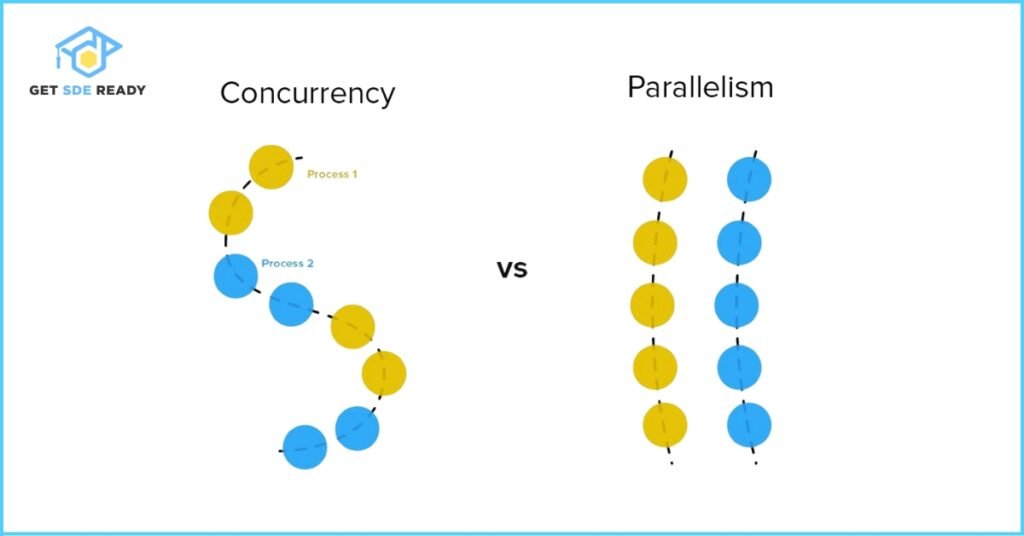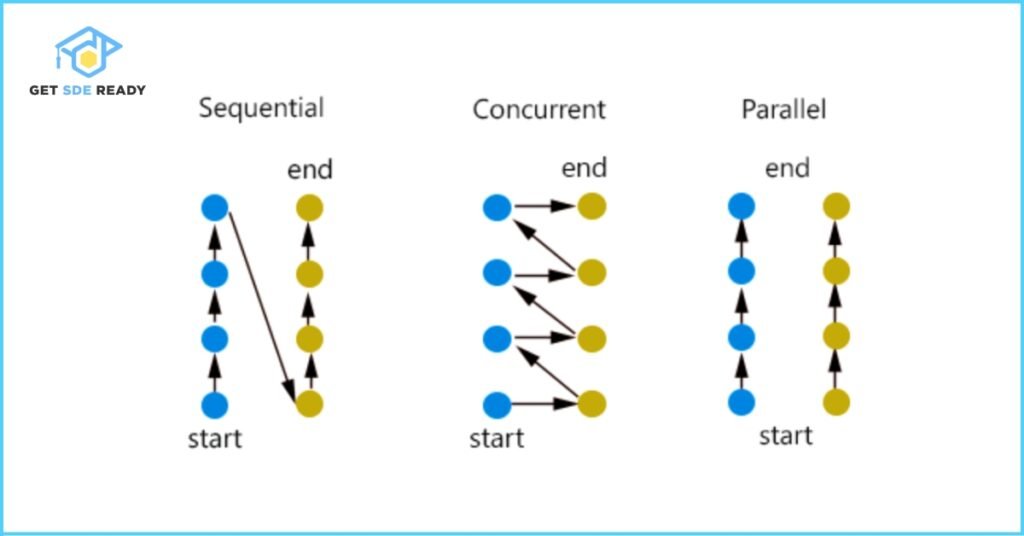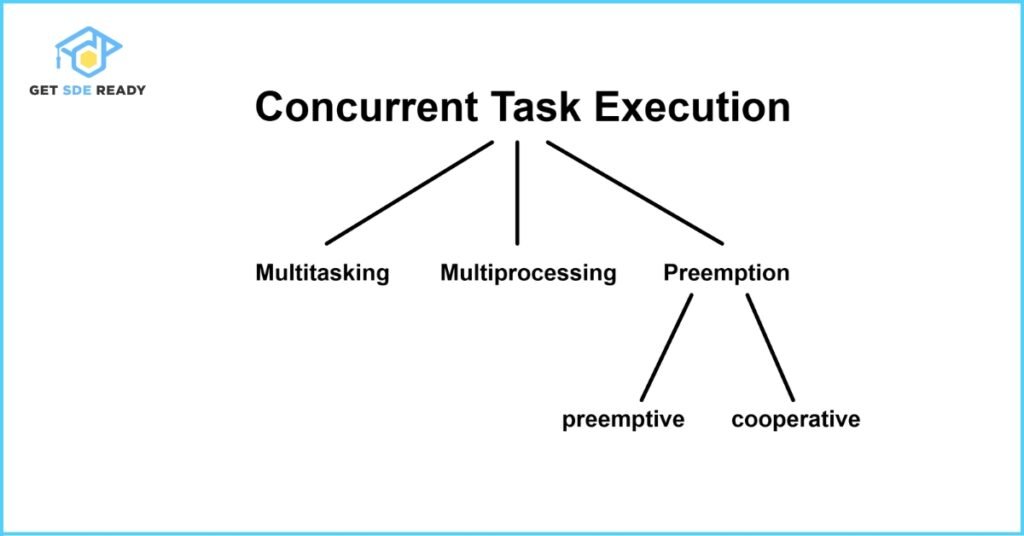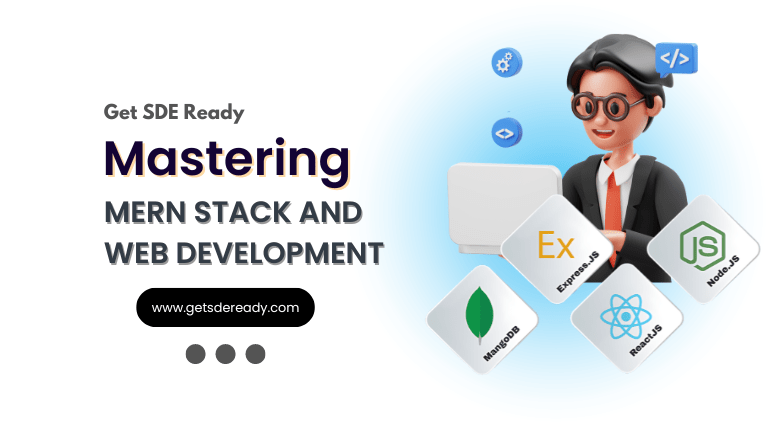Data Structures and Algorithms
- Introduction to Data Structures and Algorithms
- Time and Space Complexity Analysis
- Big-O, Big-Theta, and Big-Omega Notations
- Recursion and Backtracking
- Divide and Conquer Algorithm
- Dynamic Programming: Memoization vs. Tabulation
- Greedy Algorithms and Their Use Cases
- Understanding Arrays: Types and Operations
- Linear Search vs. Binary Search
- Sorting Algorithms: Bubble, Insertion, Selection, and Merge Sort
- QuickSort: Explanation and Implementation
- Heap Sort and Its Applications
- Counting Sort, Radix Sort, and Bucket Sort
- Hashing Techniques: Hash Tables and Collisions
- Open Addressing vs. Separate Chaining in Hashing
- DSA Questions for Beginners
- Advanced DSA Questions for Competitive Programming
- Top 10 DSA Questions to Crack Your Next Coding Test
- Top 50 DSA Questions Every Programmer Should Practice
- Top Atlassian DSA Interview Questions
- Top Amazon DSA Interview Questions
- Top Microsoft DSA Interview Questions
- Top Meta (Facebook) DSA Interview Questions
- Netflix DSA Interview Questions and Preparation Guide
- Top 20 DSA Interview Questions You Need to Know
- Top Uber DSA Interview Questions and Solutions
- Google DSA Interview Questions and How to Prepare
- Airbnb DSA Interview Questions and How to Solve Them
- Mobile App DSA Interview Questions and Solutions
DSA Interview Questions
- DSA Questions for Beginners
- Advanced DSA Questions for Competitive Programming
- Top 10 DSA Questions to Crack Your Next Coding Test
- Top 50 DSA Questions Every Programmer Should Practice
- Top Atlassian DSA Interview Questions
- Top Amazon DSA Interview Questions
- Top Microsoft DSA Interview Questions
- Top Meta (Facebook) DSA Interview Questions
- Netflix DSA Interview Questions and Preparation Guide
- Top 20 DSA Interview Questions You Need to Know
- Top Uber DSA Interview Questions and Solutions
- Google DSA Interview Questions and How to Prepare
- Airbnb DSA Interview Questions and How to Solve Them
- Mobile App DSA Interview Questions and Solutions
Data Structures and Algorithms
- Introduction to Data Structures and Algorithms
- Time and Space Complexity Analysis
- Big-O, Big-Theta, and Big-Omega Notations
- Recursion and Backtracking
- Divide and Conquer Algorithm
- Dynamic Programming: Memoization vs. Tabulation
- Greedy Algorithms and Their Use Cases
- Understanding Arrays: Types and Operations
- Linear Search vs. Binary Search
- Sorting Algorithms: Bubble, Insertion, Selection, and Merge Sort
- QuickSort: Explanation and Implementation
- Heap Sort and Its Applications
- Counting Sort, Radix Sort, and Bucket Sort
- Hashing Techniques: Hash Tables and Collisions
- Open Addressing vs. Separate Chaining in Hashing
- DSA Questions for Beginners
- Advanced DSA Questions for Competitive Programming
- Top 10 DSA Questions to Crack Your Next Coding Test
- Top 50 DSA Questions Every Programmer Should Practice
- Top Atlassian DSA Interview Questions
- Top Amazon DSA Interview Questions
- Top Microsoft DSA Interview Questions
- Top Meta (Facebook) DSA Interview Questions
- Netflix DSA Interview Questions and Preparation Guide
- Top 20 DSA Interview Questions You Need to Know
- Top Uber DSA Interview Questions and Solutions
- Google DSA Interview Questions and How to Prepare
- Airbnb DSA Interview Questions and How to Solve Them
- Mobile App DSA Interview Questions and Solutions
DSA Interview Questions
- DSA Questions for Beginners
- Advanced DSA Questions for Competitive Programming
- Top 10 DSA Questions to Crack Your Next Coding Test
- Top 50 DSA Questions Every Programmer Should Practice
- Top Atlassian DSA Interview Questions
- Top Amazon DSA Interview Questions
- Top Microsoft DSA Interview Questions
- Top Meta (Facebook) DSA Interview Questions
- Netflix DSA Interview Questions and Preparation Guide
- Top 20 DSA Interview Questions You Need to Know
- Top Uber DSA Interview Questions and Solutions
- Google DSA Interview Questions and How to Prepare
- Airbnb DSA Interview Questions and How to Solve Them
- Mobile App DSA Interview Questions and Solutions
Concurrency vs Parallelism in Web Development Interviews
In the fast-paced world of web development, building applications that are responsive, scalable, and efficient is critical. Two concepts at the heart of achieving these goals are concurrency and parallelism. These terms often appear in technical interviews, especially for roles involving backend development, system design, or performance optimization. While they may seem similar, they have distinct meanings and applications. This guide dives deep into concurrency and parallelism, their differences, their importance in web development, and how they’re tested in interviews. Whether you’re preparing for a job interview or looking to enhance your skills, this post will equip you with the knowledge to excel. If you’re eager to dive deeper into web development, check out our free courses for the latest updates and learning opportunities.
Introduction to Concurrency and Parallelism
Concurrency and parallelism are foundational concepts in computer science that deal with managing multiple tasks. They are particularly relevant in web development, where applications must handle multiple user requests, process data efficiently, and maintain a smooth user experience. Understanding these concepts not only helps you build better applications but also prepares you to answer complex interview questions with confidence.
What is Concurrency?
Concurrency is the ability of a system to handle multiple tasks at the same time, but not necessarily simultaneously. It’s about managing tasks that overlap in time, often by switching between them rapidly. In web development, concurrency is commonly achieved through asynchronous programming, where tasks like fetching data or handling user requests don’t block the main thread.
For example, a web server might handle multiple HTTP requests by queuing them and processing them one after another without waiting for each to complete. This is concurrency in action.
What is Parallelism?
Parallelism involves executing multiple tasks at the same time, typically on multiple CPU cores or processors. It’s about true simultaneous execution, leveraging hardware to speed up processing. In web development, parallelism is used for computationally intensive tasks that can be split across multiple cores.

For instance, using Web Workers in a browser to process large datasets in parallel keeps the main thread free for user interactions.
Why Are These Concepts Important in Web Development?
Web applications often deal with high traffic, complex computations, and the need for real-time responsiveness. Concurrency and parallelism address these challenges by:
- Improving Performance: Handling multiple requests or tasks efficiently.
- Enhancing Scalability: Allowing systems to grow with increasing user demand.
- Ensuring Responsiveness: Keeping the user interface smooth, even during heavy processing.
In interviews, these concepts are tested to evaluate your ability to design systems that perform well under load and handle common challenges like race conditions or deadlocks.
Concurrency vs Parallelism: Key Differences
While both concurrency and parallelism deal with multiple tasks, their approaches and applications differ significantly. Understanding these differences is crucial for answering interview questions accurately.
Key Differences Table
Aspect | Concurrency | Parallelism |
Definition | Managing multiple tasks over time, often on a single CPU core. | Executing multiple tasks simultaneously on multiple CPU cores. |
Execution | Tasks are interleaved, creating the illusion of simultaneous execution. | Tasks run at the same time, leveraging multiple processors. |
Hardware Requirement | Can work on a single-core CPU. | Requires multi-core CPUs or distributed systems. |
Use Case | Handling multiple user requests in a web server. | Processing large datasets in parallel, like image rendering in a browser. |

Examples of Concurrency and Parallelism
- Concurrency Example: In Node.js, the event loop handles multiple API requests concurrently by queuing them and processing them asynchronously.
- Parallelism Example: A server using multiple threads to process data-intensive tasks, such as generating reports, across multiple CPU cores.
It’s also worth noting that concurrency and parallelism can coexist. For instance, a multi-core server can handle multiple requests concurrently while processing each request’s computations in parallel.
Importance in Web Development Interviews
Concurrency and parallelism are hot topics in web development interviews because they directly impact the performance and scalability of applications. Interviewers use these questions to assess your technical depth, problem-solving skills, and familiarity with modern web technologies.
Why Are These Topics Tested?
- System Design: Web applications must handle thousands of users simultaneously, requiring efficient concurrency mechanisms. Learn more about system design in our master course.
- Performance Optimization: Parallelism is key to leveraging multi-core processors for tasks like data processing or machine learning. Explore these topics further in our data science course.
- Problem-Solving: Concurrency introduces challenges like race conditions, deadlocks, and thread safety, which interviewers test to gauge your ability to handle complex scenarios.
- Framework Knowledge: Popular frameworks like Node.js, Django, or Spring Boot have built-in support for concurrency and parallelism, and interviewers may ask how you’ve used them.
Real-World Relevance
In practice, web developers use concurrency to ensure servers can handle multiple requests without delays and parallelism to speed up CPU-intensive tasks. For example, a social media platform might use concurrency to manage user interactions and parallelism to process video uploads in the background.
Common Interview Questions on Concurrency and Parallelism
Interviewers often ask questions to test your theoretical understanding and practical application of concurrency and parallelism. Below are some common questions, along with guidance on how to approach them.
Concurrency-Related Questions
- How does Node.js handle concurrency?
- Answer: Node.js uses a single-threaded event loop to handle concurrency. It processes tasks asynchronously using non-blocking I/O operations, allowing it to handle multiple requests without waiting for each to complete. For example, when a user makes an API call, Node.js queues the request and moves on to the next task, processing the response when it’s ready.
- Tip: Mention the event loop and asynchronous mechanisms like callbacks, promises, or async/await.
- What is asynchronous programming in JavaScript?
- Answer: Asynchronous programming allows tasks to run without blocking the main thread. JavaScript achieves this through callbacks, promises, or async/await, enabling tasks like fetching data or reading files to occur in the background while the application remains responsive.
- Tip: Provide an example, like using Promise.all to fetch multiple APIs concurrently.
- Explain race conditions and how to prevent them.
- Answer: A race condition occurs when multiple threads or processes access shared resources concurrently, leading to unpredictable outcomes. To prevent them, use synchronization techniques like locks, semaphores, or atomic operations, or design systems to avoid shared state, such as using immutable data.
- Tip: Reference real-world scenarios, like updating a database record from multiple requests.
Parallelism-Related Questions
- How can you achieve parallelism in a web application?
- Answer: Parallelism can be achieved using Web Workers in client-side JavaScript for tasks like image processing or using multithreading/multiprocessing in server-side applications (e.g., Java’s ThreadPool or Python’s multiprocessing module).
- Tip: Highlight Web Workers for browser-based parallelism and mention server-side frameworks.
- What are Web Workers in JavaScript?
- Answer: Web Workers are JavaScript scripts that run in background threads, separate from the main thread, enabling parallel execution. They’re ideal for CPU-intensive tasks like data processing without freezing the UI.
- Tip: Mention navigator.hardwareConcurrency to determine the number of available cores.
- What are the challenges of parallel programming?
- Answer: Challenges include managing shared resources, avoiding deadlocks (where threads wait indefinitely for each other), and ensuring thread safety. Overhead from creating threads or processes can also reduce performance if not managed properly.
- Tip: Discuss tools like thread analyzers or profilers to debug parallel code.
Real-World Examples in Web Development
Concurrency and parallelism are not just theoretical—they’re critical for building efficient web applications. Below are practical examples of how these concepts are applied.
Concurrency in Web Development
- Handling Multiple User Requests:
- Web servers, like those built with Node.js, use concurrency to handle thousands of simultaneous user requests. The event loop queues requests and processes them asynchronously, ensuring the server remains responsive even under high traffic.
- Example: A Node.js server handling API requests for a social media app, where users post updates and fetch feeds concurrently.
- Asynchronous API Calls:
- In client-side JavaScript, concurrency is achieved using asynchronous programming. For instance, Promise.all allows multiple API calls to run concurrently, reducing wait times for data fetching.
- Example: A news website fetching headlines, images, and user comments simultaneously using Promise.all.

Parallelism in Web Development
- Web Workers for Computation:
- In browsers, Web Workers enable parallelism by running JavaScript in background threads. This is useful for tasks like image processing, data analysis, or rendering complex visualizations without blocking the main thread.
- Example: A photo-editing web app using Web Workers to apply filters to large images in parallel.
- Server-Side Parallelism:
- On the server side, parallelism is achieved through multithreading or multiprocessing. For example, a Python Flask server might use the multiprocessing module to process large datasets across multiple CPU cores.
- Example: A data analytics dashboard generating real-time reports by distributing computations across multiple threads.
Combining Concurrency and Parallelism
- Data Scraping Services:
- Web scraping applications often use concurrency to fetch data from multiple websites simultaneously (e.g., using asynchronous HTTP requests) and parallelism to process the collected data across multiple CPU cores.
- Example: A price comparison tool fetching product data from multiple e-commerce sites concurrently and analyzing it in parallel for real-time insights.
Best Practices and Common Pitfalls
To effectively use concurrency and parallelism in web development, follow best practices and avoid common pitfalls.
Best Practices
- Leverage Asynchronous Programming:
- Use async/await or promises in JavaScript to handle I/O-bound tasks like API calls or database queries without blocking the main thread.
- Example: Use async/await to fetch user data from a database while keeping the server responsive.
- Use Web Workers for CPU-Intensive Tasks:
- Offload heavy computations to Web Workers in browsers to maintain a smooth user experience.
- Example: Process large datasets in a Web Worker to avoid freezing the UI during data visualization.
- Ensure Thread Safety:
- Use synchronization mechanisms like locks, atomic operations, or immutable data to prevent race conditions in concurrent systems.
- Example: Use a mutex lock in a Java Spring Boot application to safely update shared resources.
Common Pitfalls
- Race Conditions:
- Occur when multiple threads access shared resources without proper synchronization, leading to unpredictable results.
- Solution: Implement locks or use thread-safe data structures.
- Deadlocks:
- Happen when threads wait indefinitely for each other to release resources, causing the system to freeze.
- Solution: Use timeout mechanisms or design systems to avoid circular dependencies.
- Overhead of Parallelism:
- Creating too many threads or processes can lead to excessive context switching, reducing performance.
- Solution: Use thread pools or limit the number of workers based on navigator.hardwareConcurrency.
Conclusion
Concurrency and parallelism are essential for building high-performance web applications and are frequently tested in web development interviews. Concurrency allows systems to manage multiple tasks efficiently, while parallelism speeds up execution by leveraging multiple CPU cores. By understanding their differences, real-world applications, and common interview questions, you can demonstrate your technical expertise and problem-solving skills.
To prepare, practice coding problems like the Producer-Consumer pattern, explore asynchronous programming in JavaScript, and experiment with Web Workers for parallelism. You can also check out our web development course for in-depth learning. Resources like the GitHub repository on concurrency interview questions can provide valuable practice. Build small projects, such as a web app that fetches multiple APIs concurrently or processes data in parallel, to solidify your understanding.
By mastering concurrency and parallelism, you’ll not only ace your interviews but also build web applications that are fast, scalable, and user-friendly. Start practicing today with our crash course and take your web development skills to the next level!
FAQs
What is the difference between concurrency and parallelism?
Concurrency is about handling multiple tasks at the same time but not necessarily simultaneously, often through rapid task switching on a single CPU core. Parallelism involves executing multiple tasks truly simultaneously, typically on multiple CPU cores or processors.
How does Node.js handle concurrency?
Node.js uses a single-threaded event loop combined with asynchronous I/O operations to handle concurrency. This allows it to process multiple requests without blocking by queuing tasks and handling them as resources become available.
What are Web Workers and how do they relate to parallelism?
Web Workers are JavaScript APIs that allow running scripts in background threads, separate from the main thread. They enable parallelism by allowing CPU-intensive tasks to be offloaded to these worker threads, keeping the main thread responsive.

DSA, High & Low Level System Designs
- 85+ Live Classes & Recordings
- 24*7 Live Doubt Support
- 400+ DSA Practice Questions
- Comprehensive Notes
- HackerRank Tests & Quizzes
- Topic-wise Quizzes
- Case Studies
- Access to Global Peer Community
Buy for 52% OFF
₹25,000.00 ₹11,999.00
Accelerate your Path to a Product based Career
Boost your career or get hired at top product-based companies by joining our expertly crafted courses. Gain practical skills and real-world knowledge to help you succeed.

SDE 360: Master DSA, System Design, AI & Behavioural
- 100+ Live Classes & Recordings
- 24*7 Live Doubt Support
- 400+ DSA Practice Questions
- Comprehensive Notes
- HackerRank Tests & Quizzes
- Topic-wise Quizzes
- Case Studies
- Access to Global Peer Community
Buy for 50% OFF
₹39,999.00 ₹19,999.00

DSA, High & Low Level System Designs
- 85+ Live Classes & Recordings
- 24*7 Live Doubt Support
- 400+ DSA Practice Questions
- Comprehensive Notes
- HackerRank Tests & Quizzes
- Topic-wise Quizzes
- Case Studies
- Access to Global Peer Community
Buy for 52% OFF
₹25,000.00 ₹11,999.00

Fast-Track to Full Spectrum Software Engineering
- 120+ Live Classes & Recordings
- 24*7 Live Doubt Support
- 400+ DSA Practice Questions
- Comprehensive Notes
- HackerRank Tests & Quizzes
- 12+ live Projects & Deployments
- Case Studies
- Access to Global Peer Community
Buy for 51% OFF
₹35,000.00 ₹16,999.00

Low & High Level System Design
- 20+ Live Classes & Recordings
- 24*7 Live Doubt Support
- Case Studies
- Comprehensive Notes
- HackerRank Tests
- Topic-wise Quizzes
- Access to Global Peer Community
- Interview Prep Material
Buy for 60% OFF
₹20,000.00 ₹7,999.00

Mastering Mern Stack (WEB DEVELOPMENT)
- 65+ Live Classes & Recordings
- 24*7 Live Doubt Support
- 12+ Hands-on Live Projects & Deployments
- Comprehensive Notes & Quizzes
- Real-world Tools & Technologies
- Access to Global Peer Community
- Interview Prep Material
- Placement Assistance
Buy for 53% OFF
₹15,000.00 ₹6,999.00
Reach Out Now
If you have any queries, please fill out this form. We will surely reach out to you.
Contact Email
Reach us at the following email address.
arun@getsdeready.com
Phone Number
You can reach us by phone as well.
+91-97737 28034
Our Location
Rohini, Sector-3, Delhi-110085
